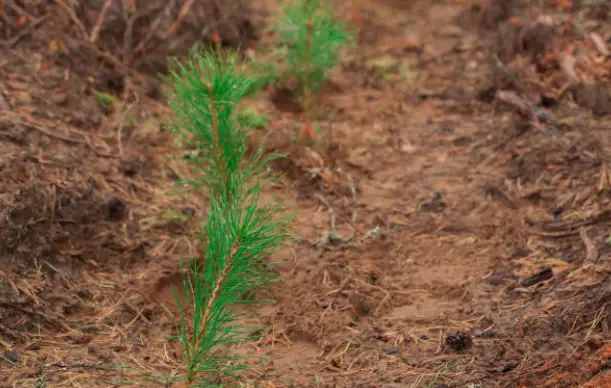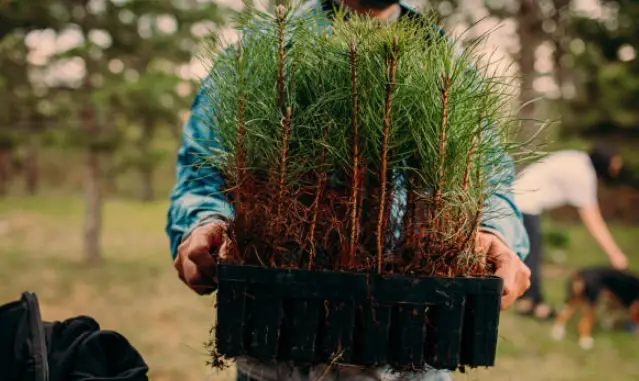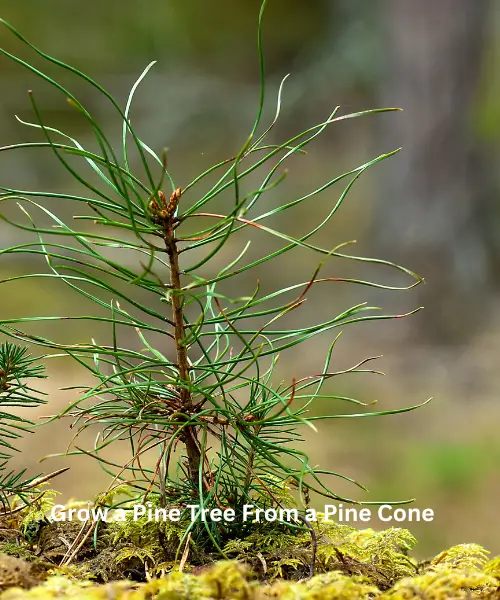If you’ve ever walked through a forest or park and come across a fallen pine cone, you may have wondered, Can I grow a whole pine tree from this?
The answer is yes; you can grow a pine tree from a pine cone! It’s an amazing process that allows these towering evergreen trees to propagate and spread throughout the landscape.
Pine cones are the woody fruit of pine trees, and they contain seeds that can eventually grow into new pines. Each cone scale covers a seed that is winged and ready to take to the air to find a new spot to germinate.
You may grow pine tree seedlings and eventually mature trees over many years by planting the seeds from fallen pine cones.
However, getting seeds from a pine cone to successfully germinate and thrive does take some care and attention. Let’s explore what’s involved in planting pine cone seeds and growing pine trees from seed.
Extracting the Seeds From Pine Cones
The first step is to extract the viable seeds from within the scales of the pine cone. Look for cones that are dried out and cracked open, indicating they have opened up to release seeds. Fresh green cones won’t be open yet.

There are a few methods you can use to open up the cone scales and access the seeds inside:
Air Drying: Place the pine cones in a warm, dry area for a couple weeks and the scales will open up as the cone dries out. Give them a slight flex to make the scales spread apart.
Oven Method: Carefully put the pine cones on a baking sheet in the oven at around 200°F for 30–60 minutes. The heat will make the scales open up.
Boil & Dry: Boil the pine cones for 30 minutes, then remove from the water and allow to fully dry out for a few days. The scales should open wide.
Once the cone scales have opened, you can pluck out the seeds hidden inside. Seeds will be winged and may have a kernel-like look. Discard any seeds that are cracked, broken, or appear too shriveled.
Seed Stratification
One unique aspect of growing pines from seed is that the seeds need to go through stratification before they will germinate. This is a process in which cold, moist conditions initiate biochemical changes in the seeds that trigger germination.

For pine seeds, cold stratification is recommended for 1-3 months by placing the seeds in a plastic bag with moist sphagnum moss or vermiculite and refrigerating. The cold, humid conditions trick the seeds into thinking they’ve gone through winter so they’ll be ready to sprout in spring.
Potting and Germination
After the pine seeds have been stratified, you can sow them in containers with a well-draining seed starting mix. Plant them about 1/2 inch deep and keep the soil lightly moist. Place the containers in a bright, warm location, like a sunroom or greenhouse.
Pine seeds can be slow and sporadic germinators. Some may sprout in just a couple weeks, while others may take several months. Be patient as the seedlings push up their first tiny shoots and then unfurl their seed leaves.
Once the seedlings have their second set of true leaves, you can transplant them into larger containers filled with a mix of potting soil and compost or plant them outdoors in a sunny spot. Seedlings planted outdoors should be “hardened off” by slowly acclimating them to outdoor conditions over 1-2 weeks.
Caring For Pine Seedlings
In the first year, pine seedlings will focus most of their energy on developing a deep taproot. They won’t put on a lot of growth above ground but be sure to keep the soil consistently moist as the roots get established.

Pine seedlings require full sun exposure. As they grow, provide shelter from hot afternoon sun and strong winds, which can easily desiccate and damage the young plants. Mulching around pine seedlings can help retain moisture.
Each year thereafter, your little pine seedlings will send up a new “candle” of growth from the terminal bud. At around 5 years old, the pine will put on its adult foliage and take on a more tree-like appearance.
Transplanting and Care for Young Pine Trees
Growing pine trees from seed requires patience, as it takes many years for them to mature into a sizable plant. Most pines are very slow growers, adding just 1-2 feet per year.

Once your pine has reached 2–3 feet tall, you may need to transplant it into a larger container or into the ground if you started it in a pot. Make sure to transplant in early spring, when roots will start becoming active.
Pines require a sunny site with well-draining soil that doesn’t become overly dry. Many species prefer slightly acidic soil. They can adapt to a range of soil types but won’t tolerate soggy, flooded conditions.
Plant your young pine tree at the same depth it was growing previously. Space multiple trees far enough apart to accommodate their mature spreads, which can easily be 20–40 feet wide for many pine species.
Water young pines regularly through their first few years, when the root systems are getting established. Apply a 2-inch layer of mulch over the root zone without touching the trunk. This will conserve moisture and prevent weeds.
Pine trees don’t require heavy fertilization but can benefit from an annual application of a balanced, slow-release fertilizer each spring. Avoid fertilizing after mid-summer.
Eventually, as your pine tree matures, it will need very little supplemental care other than monitoring for pest or disease issues and removing any dead limbs. Let the lower branches remain intact to allow the tree to follow its natural pyramidal growth habit.
With care and time, the humble pine cone seeds you started with will become a beautifully statuesque pine tree, providing ever-green foliage, shade, and stunning bark textures in your landscape for many decades to come.
Growing Pine Trees: A Rewarding Process
While starting pine trees from seed does involve some specialized steps like stratification, it’s certainly possible for the backyard gardener to grow these majestic evergreen trees from a low pine cone found in nature.
The process rewards you with a deeper appreciation for the life cycle of pines and their seeds. Nurturing a pine from seed to sapling to full-grown tree allows you to form a special connection with the plant.
So if you come across an intriguing pine cone on your next nature walk, snag it up and try your hand at germinating the seeds and growing your very own tiny pine forest! With some simple supplies and patience, you can have towering pine trees growing right in your backyard.


